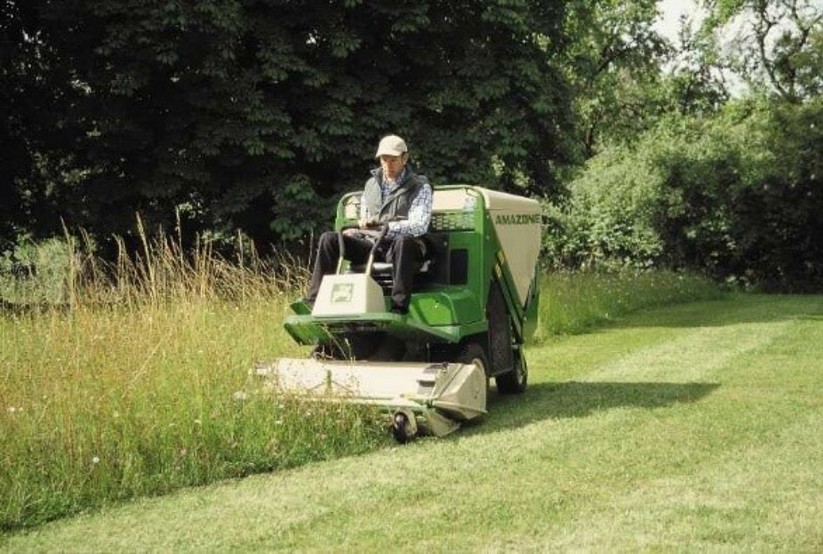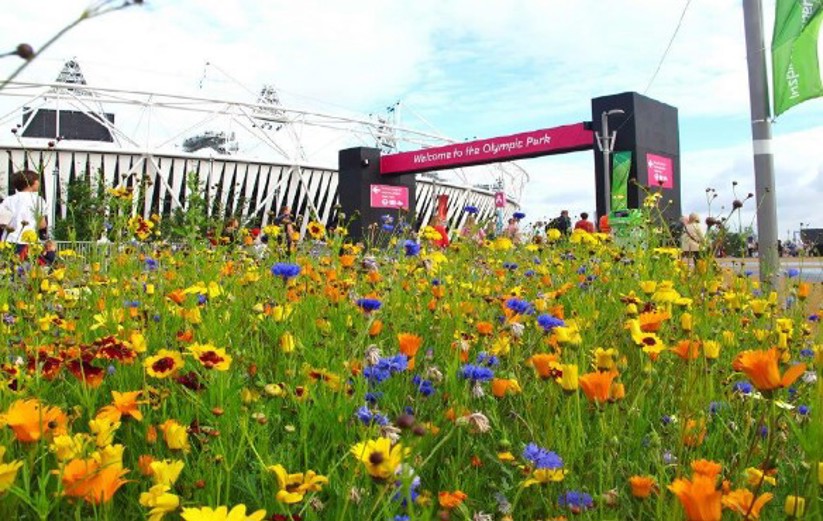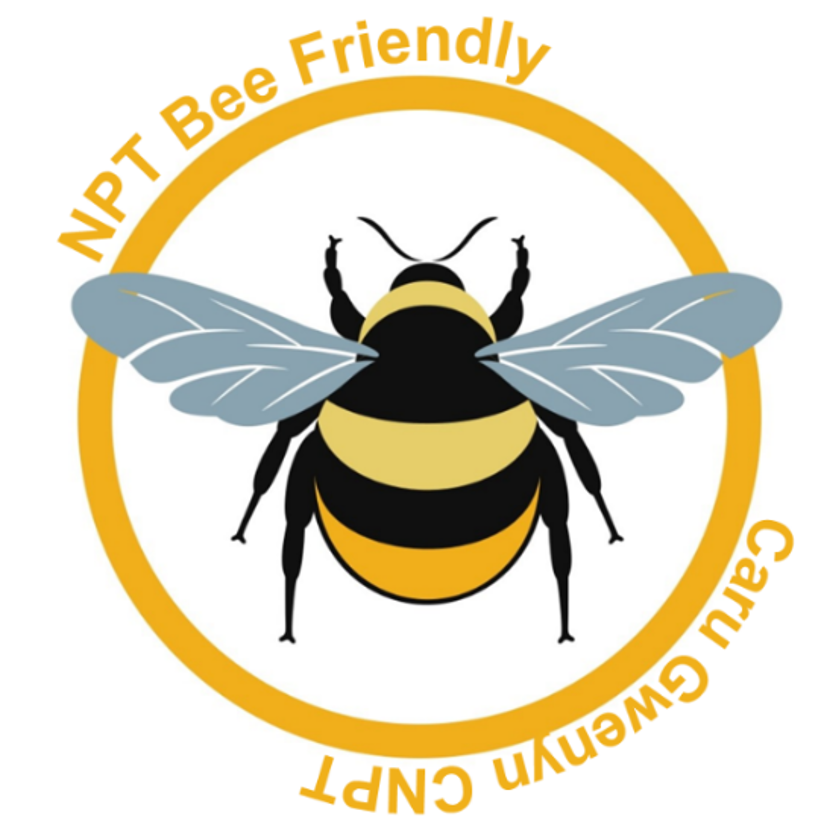Document
NPT Bee Friendly scheme
A new approach to managing verges and grasslands in NPT
In recent years, the loss of wildflower grassland habitat and the pollinating insects they support has become an issue of public concern. NPT Council has a responsibility to address the nature and climate emergencies and is also committed to protect, conserve and enhance our natural environment under the terms of the Corporate Plan, Biodiversity Duty Plan, NPT Nature Recovery Action Plan and Wales Pollinator Action Plan.
A new approach to managing the verges and grasslands of NPT has been approved by the County Council’s Regeneration and Sustainable Development Cabinet Board on 30th July 2021 and is being progressively implemented as resources allow.
The principles of this approach are:
- To increase the area and extent of wildflower grassland (i.e. roadside verges and larger meadow areas which are managed to encourage wildflowers and pollinating insects) in Neath Port Talbot County Borough, in support of the Council’s Biodiversity Duty and the NPT Nature Recovery Action Plan.
- To favour change of management over seeding or planting where possible, in order to encourage the native seed bank to flourish without introducing non-native species or those which would not naturally occur in the area
- To classify all verges in NPT by 2026 under one of the following categories. More information on each category is provided later on in this document.
- Nectar Cut
- Conservation Cut
- Meadow Cut
- Visibility Splay
- Amenity Cut
- To keep the local communities of NPT informed and updated
The NPT Bee Friendly Scheme includes grassland areas in publicly owned sites and roadside verges, and expands on the previous ‘Conservation Verges Scheme’, which has been in operation since 2004.
How grassland ecosystems function
High quality (i.e. high species diversity) wildflower grasslands exist naturally on low nutrient soils, where management ensures that the soil nutrients do not allow more competitive plants such as nettles and grasses to dominate. The exact nature of these grasslands depends on a number of factors, including soil type and water content. In NPT, we have a number of different grassland habitats, including neutral grassland, marshy grassland and acid grassland.
Wildflower grasslands require management, traditionally through cutting or grazing, to prevent them from becoming rank (nutrient enriched) and eventually succeeding to woodland.
In order to ensure that a wildflower grassland has high species diversity, the arisings (cut material) need to be removed following cutting to keep the soil nutrients low and the grassland needs to be left to flower for the entire flowering season until seeding is completed, usually between April and August. The arisings can be piled into compost heaps to create habitat for species such as grass snakes, made into hay or taken away for green waste recycling.
How our management is changing
Traditionally, our roadside verges in NPT are all cut every 2-3 weeks during the growing season i.e. late March to end September and the arisings are mulched and dropped on top of the grass. This fertilises the soil, encouraging further grass growth. As of 2021, at certain locations as agreed with the Streetcare Services Section, we will be changing this management and instead encouraging the growth of wildflowers and reducing the frequency of required cuts through the use of ‘cut and collect’ machines.
Traditional "Cut and Fly" management
- Mower mulches as it mows, returning the nutrients to the soil
- More grass grows, more quickly, outcompeting other species
- Mowing needed again within 2-3 weeks
"Cut and Collect" management
- Mower collects arisings as it mows, gradually reducing the amount of nutrient that fuels grass growth
- Grass growth is less vigorous, reducing the frequency that mowing is required and increasing the diversity of wildflowers
As well as managing grasslands on publically owned sites to encourage wildflowers, the intention is that by the end of five years, all verges in NPT will be managed in one of the following ways:
Nectar Cut
.All verges where a short sward is desirable will be changed from a 2-3 weekly cycle of mowing to a four-weekly cycle, allowing short-flowering plants to complete their full flowering cycle and increasing the nectar available to insects. Where possible, the arisings will be removed to reduce the nutrient content of the soil. This is based on research by Plantlife (Plantlife No Mow May 2020NB1). Whilst this cycle will still result in short flowering species being cut, the scheme will work on the principle that there will remain a sufficient nectar source in the wider area to provide a net gain for pollinators.
Conservation Cut
Certain rural verges e.g. lanes between villages, which will not be cut inside the flowering season (April-September). We will aspire to include as many verges in this classification as possible within workforce constraints.
Meadow Cut
As conservation cut but certain sites will be cherry picked for meadow management i.e. cut using a cut-and-collect machine, arisings left in piles on site, no mowing between April and August and edge-cuts to maintain a neat appearance. Any such designation will be dependent on suitability of the verge for depositing of arisings.
Visibility Splay
Cut as regularly as required
Amenity Cut
Verges which are used as public open space and require regular mowing.
Trial sites
In the first year (2021), a number of sites in each ward will be identified in order to trial this scheme. Sites are agreed between Neighbourhood Services staff and the Countryside and Wildlife Team and then approved by the local member before inclusion in the scheme.
At the end of 2021, targets will be set for increase each year, leading to the fifth year, by which time all verges will be classified and managed appropriately. Areas can be re-classified if required in response to monitoring.
The initial priority will be to increase the number of meadow cut verges and undertake trials of the Nectar Cut approach before rolling out further. We will take a phased approach to the changes, allowing time to adapt to member feedback/concern, changes in staff practices and to adopt a gradual process of change of machinery as replacement becomes necessary.
What to expect
With the adoption of a change of management to Nectar Cut, Meadow Cut or Conservation Cut, you can expect more wildflowers!
You may start to see the following wildflowers appearing in your local verge. The specific species you may see depends on factors such as soil type and time of year, and will vary across the county.
We’d love to see what’s popping up in your verges and grassland areas!
What not to expect
We will not be using seed mixes such as that pictured below. Whilst initially pretty to look at, these mixes have limited benefit for nature. Some of the issues with the use of these seed mixes are outlined below:
- These are annual mixes which require renewing each year, which involves repeated use of herbicide, soil disturbance and re-seeding. The use of herbicide should always be avoided when possible. This method is unsustainable in the long term.
- The large majority of the brightly coloured species in annual seed mixes are non-native species which would not naturally occur in NPT (or even in the UK!). This can displace the distinctive native wildflowers which are already in the seed bank and erode the wonderful local distinctive wildflower diversity which we are lucky enough to have in NPT. Non-native species can even become highly invasive if introduced in the wrong place, causing a significant pressure to the local biodiversity.
- Many of our special pollinators are limited in range and specially adapted to feed from specific plants. Pollinators thrive on the flowers which are native to the same region as they are i.e. those to which they are best adapted. Introducing seed mixes containing species that are not generally found in that region therefore can have little to no benefit to the native pollinators of that region.
Therefore, our aim is to encourage the native seed bank to flourish through a change in management. This is the most sustainable method of increasing the area and extent of wildflower grasslands in NPT. You will often be surprised by what pops up, such as the orchids which appeared in this verge in Longford when mowing was paused due to COVID lockdown restrictions!
The benefits
Costs
We are hopeful that over time, this approach will free up more resources to attend to other street care needs such as litter, flytipping and sign cleaning, although there may initially be initial outlays, for example, for disposal of green waste and initial machinery purchases.
We have already purchased one cut and collect machine via the Welsh Government Local Places for Nature Fund. There may also be hidden dividends from this approach through redeploying our in-house teams to other Streetcare tasks such as litter picking.
Financial and workforce resource requirements will be monitoring and kept under review as the scheme progresses. If ultimately it leads to a saving then all the better.
Improved environment
As soil nutrients decrease in a grassland ecosystem, the number of plant species that can survive increases, and the dominance of coarse grasses reduces. This produces a more diverse roadside environment for wildlife and adds to the biodiversity of the area.
This can already be seen in practise in NPT on Harbour Way and Fabian Way, where this management has been in place for a number of years under the Conservation Sites Scheme. These stretches of road are attractive to both road users and pollinators. In fact, they are also likely to support populations of the endangered Shrill Carder Bee, which can be found in the coastal regions of the county.
Branding
Roadside verges and grasslands included in the NPT Bee Friendly Scheme will be marked with the following logo, featuring the endangered Shrill Carder Bee.
Who manages the verges?
The NPT Bee Friendly sites are managed by our Neighbourhood Services teams with support from the Countryside and Wildlife Team, whilst policy with regard to the scheme is coordinated by the Countryside and Wildlife section and queries in relation to this scheme can be made by contacting environment@npt.gov.uk
Working with communities
We are keen to hear from any local community about how they think they can help us with the ecological approach to verge management in their area. We ask you to let us know:
- Where you think an area would benefit from less cutting or where cutting is unnecessary
- If your community would like to take on management of the verges in line with the ecological approach
- If you would like to volunteer to help us look after one of the special NPT Bee Friendly Verges
- If you know of areas in your community that we currently mow regularly that would be suitable to establish a NPT Bee Friendly Verge
Monitoring
We will be monitoring these areas for biodiversity benefit in line with standard methodology. Financial and staff resource requirements will also be monitored and kept under review. The results of all monitoring will inform how the scheme develops and is implemented.
Complaints and compliments
We receive varying numbers of complaints each year from the public dissatisfied with the amount or timing of grass verge maintenance we undertake. Verge management is something of a no-win situation as some feedback is of the view that the grass is cut too little whilst other feedback is concerned the grass was cut too early for wildflowers to set seed, or was not cut early enough in the season, or the grass had been cut but the arisings left behind causing a mess.
We are open to adding new verges and grassland areas to the scheme at any point and the inclusion of a particular area in the scheme will also be reviewed if a significant number of complaints are received. It is noted however that because changing verge management can effect working and resource patterns, the introduction of new verges into the scheme may need to wait to the start of the next growing season.
Contacting us
Please contact us via environment@npt.gov.uk – Subject Title ‘NPT Bee Friendly’
Reviewing the scheme
The scheme will be reviewed every five years.
References and further information
- NPT Bee Friendly Webpage
- Plantlife Road Verge Campaign
- Plantlife No Mow May- How to get more flowers in your lawn
- Magnificent Meadows


